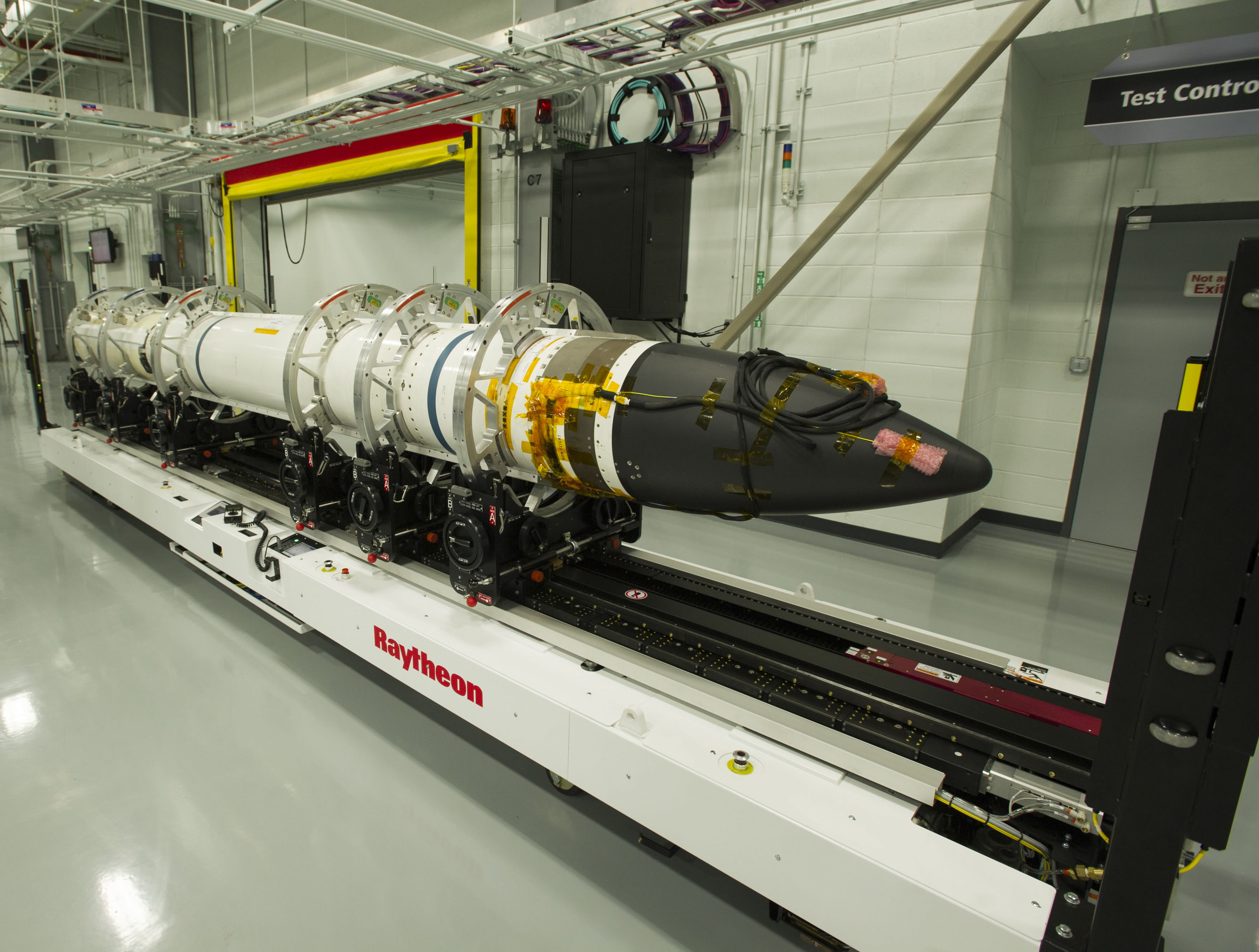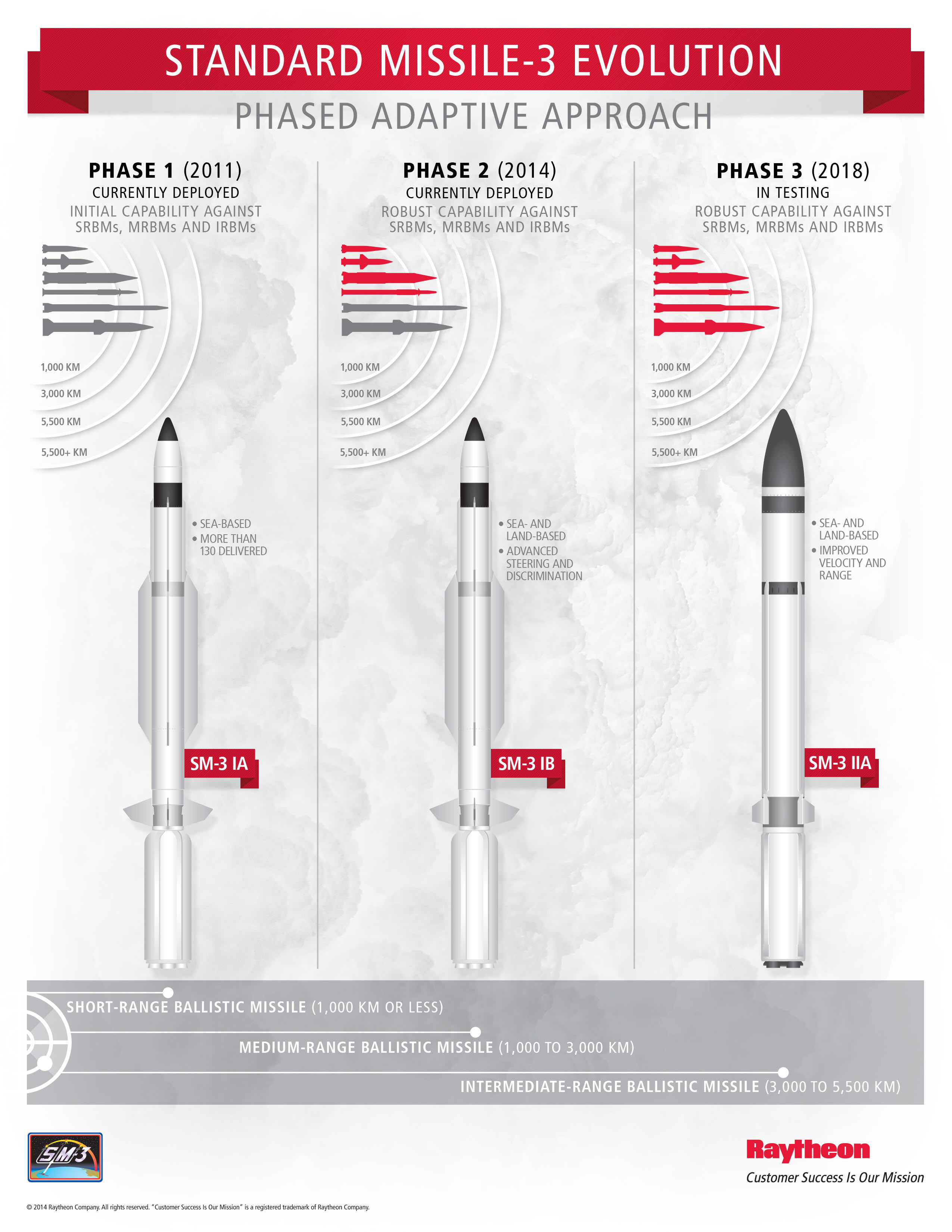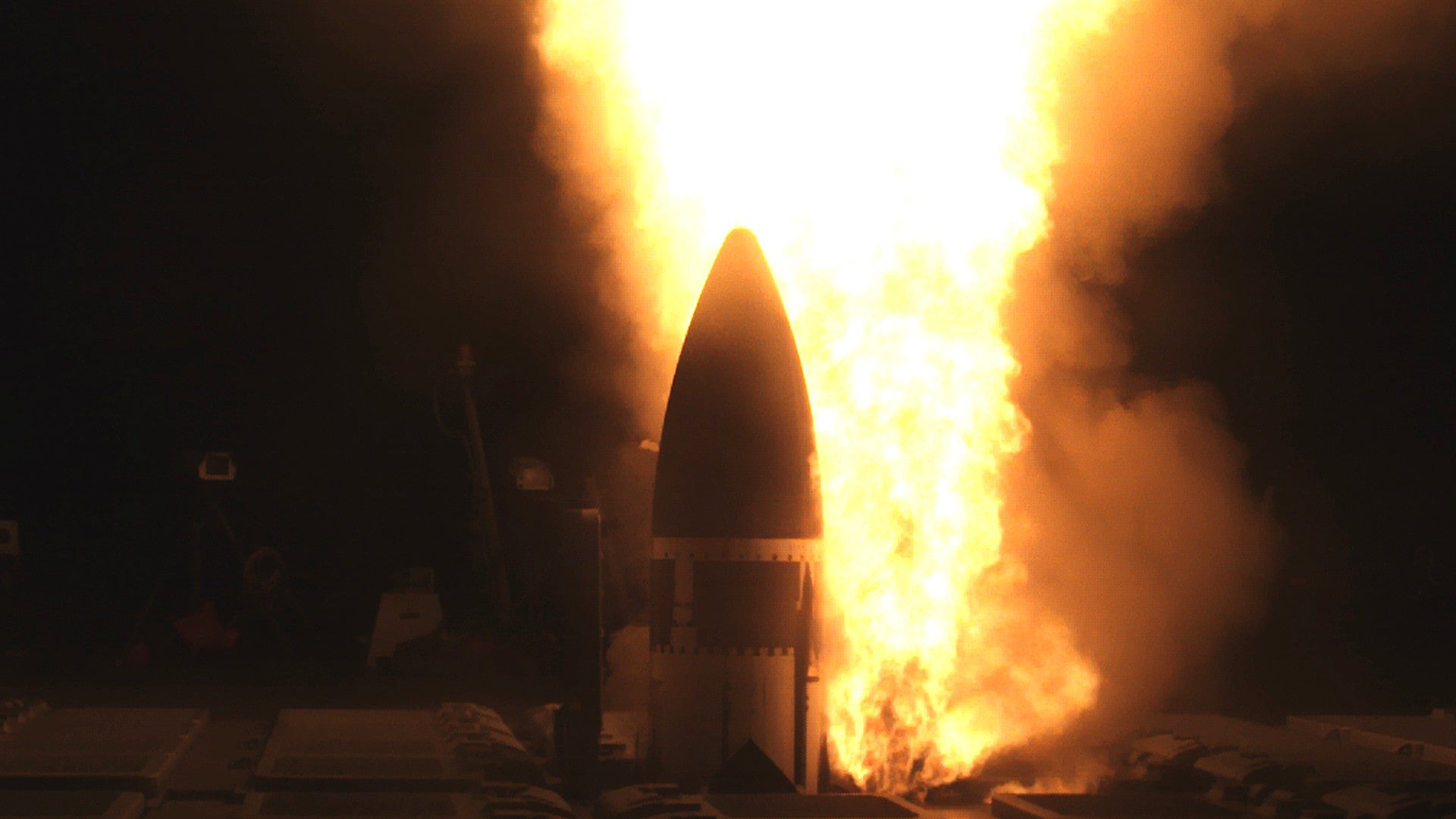In a milestone achievement for ballistic missile defense, an SM-3 Block IIA missile has successfully destroyed a threat-representative intercontinental ballistic missile (ICBM) target. The test, run by the U.S. Missile Defense Agency and U.S. Navy, is said to have “met its primary objective” — proving that an SM-3 Block IIA can engage an ICBM threat. You can read all about this missile’s capabilities in this past War Zone piece.
The test, officially referred to as the Flight Test Aegis Weapon System-44, or FTM-44, and codenamed Stellar Lancer, had originally been planned for May 2020, but was delayed due to concerns over the COVID-19 pandemic. Instead, it kicked off at around 12:50, Eastern Standard Time, on November 17, 2020, when the ICBM-representative target was launched from the Ronald Reagan Ballistic Missile Defense Test Site on Kwajalein Atoll. The remote test site is located in the Republic of the Marshall Islands deep in the central Pacific Ocean. The target missile, which was previously reported as being a three-stage Northrop Grumman ICBM-T2, then climbed toward the “broad ocean area northeast of Hawaii,” according to the U.S. Missile Defense Agency (MDA).
The scenario envisaged that the ICBM was headed toward a target on Hawaii, which was defended by a U.S. Navy Arleigh Burke class guided-missile destroyer, the USS John Finn (DDG-113), at sea in the Pacific. The ship is equipped with the Aegis Ballistic Missile Defense (BMD) system and has so-called “engage-on-remote” capabilities through the Command and Control Battle Management Communications (C2BMC) network, in which the warship receives targeting data from other sensors.

The destroyer received tracking data via the C2BMC system, producing a fire-control solution, before launching and guiding an SM-3 Block IIA missile toward the incoming threat. The SM-3 Block IIA then destroyed the target with its kinetic “kill vehicle,” which uses sheer force, rather than a conventional explosive warhead, slamming into the target as it travels outside the Earth’s atmosphere.
The kill vehicle is larger and more maneuverable than the one found on the previous Block IB ballistic missile interceptor. The Block IIA also features a larger rocket motor to ensure increased range and altitude, and a higher terminal velocity. This interceptor was originally designed to defeat intermediate and medium-range ballistic missile threats, bridging a gap between terminal phase intercept systems, such as Patriot and THAAD, and to some degree the SM-6, and the Ground-Based Midcourse Defense (GMD) system.
However, the expansion of the SM-3 Block IIA interceptor’s capabilities to allow it to engage intercontinental ballistic missiles, or ICBMs, has long been an ambition of the Pentagon. For this to be achieved, it requires the missile — and its supporting Aegis BMD and C2BMC architecture — to be able to conduct mid-course intercepts—while the target is flying outside of the atmosphere, before it dives on its target—against higher and faster-flying targets.

“This first-of-its-kind test shows that our nation has a viable option for a new layer of defense against long-range threats,” said Bryan Rosselli, vice president of Strategic Missile Defense at Raytheon Missiles & Defense, the company responsible for developing the SM-3 Block IIA in collaboration with Japan’s Mitsubishi Heavy Industries. As a major partner in the program, Japan also plans to equip its own warships with the weapon but has shelved a proposal to establish land-based Aegis Ashore facilities within its territory.
U.S. Navy Vice Admiral Jon Hill, the Director of MDA, also said the following in a statement:
“This was an incredible accomplishment and critical milestone for the Aegis BMD SM-3 Block IIA program. The Department is investigating the possibility of augmenting the Ground-Based Midcourse Defense system by fielding additional sensors and weapon systems to hedge against unexpected developments in the missile threat. We have demonstrated that an Aegis BMD-equipped vessel equipped with the SM-3 Block IIA missile can defeat an ICBM-class target, which is a step in the process of determining its feasibility as part of an architecture for layered defense of the homeland. My congratulations to the entire test team, including our military and industry partners, who helped us to achieve this milestone.”
While judged successful in terms of meeting its main objective, program officials will now assess the telemetry and other data gathered during the FTM-44 test to evaluate the overall performance of the Aegis BMD system and other assets involved in the test.
FTM-44 was the sixth flight test of an Aegis BMD-equipped vessel using the SM-3 Block IIA missile. Not all of these have been successful, as The War Zone has reported in the past, even if at least one of the failures was ultimately attributed to a simple human operator error.
The latest test was mandated by the U.S. Congress to evaluate the feasibility of the SM-3 Block IIA missile’s capability to defeat an ICBM threat before the end of 2020. The idea was to prove that a suitably equipped warship could serve as a back-up to ground-based homeland defense systems if needed.

If all goes according to plan, Aegis radar-equipped warships such as the U.S. Navy’s Arleigh Burke-class destroyers and land-based configurations, known as Aegis Ashore, will ultimately be capable of employing these interceptors. Under Phase 3 of the European Phased Adaptive Approach, the SM-3 Block IIA will be deployed in the ground-based role in Poland and Romania.
Eventually, the SM-3 Block IIA could help partially satisfy the demand for enhanced ballistic missile defenses in the Pacific theatre, where the United States is confronted by North Korea’s rapidly evolving missile capabilities. This will be especially significant if the SM-3 Block IIA demonstrates a reliable ability to engage ICBM-like targets. Being based on warships, it would offer a considerable amount of flexibility, especially compared to the fixed GMD missile fields.

The U.S. has previously argued that its entire BMD enterprise, including the SM-3 Block IIA, is not intended to limit the credibility of Russia’s or China’s nuclear deterrents and the fact remains it wouldn’t be able to defeat any kind of large-scale nuclear attack from either of those countries. In fact, we really don’t know how big the envelope of the SM-3 Block IIA actually is, and thus where a ship would have to be positioned in order to defend a certain potential target area. Still, even the ability to successfully nullify a limited strike by less capable foes is very questionable at best. On the other hand, it’s not hard to imagine that Moscow or Beijing might view this latest development in a different light and perhaps use it to legitimize new investments in their deterrent forces.
Russia is already working to improve its anti-missile defense capabilities to defeat just the kind of problem that the SM-3 Block IIA could pose. As long ago as 2016, a Russian television documentary on the RS-24 Yars ICBM claimed that its warheads had advanced maneuvering capability to defeat these kinds of interceptors.
China’s ballistic missiles, meanwhile, present an ever more potent threat, reportedly now including the potential to strike larger-sized warships underway in the Pacific with its “carrier killer” missiles.
The FTM-44 has shown that defense against ICBMs using Aegis BMD-equipped warships is technologically feasible. The U.S. Navy now has to work out how it could employ this defensive capability as part of the wider missile defense system. At the same time, the United States may have to negotiate a potentially hostile reception from China and Russia in regards to this latest breakthrough.
Contact the author: thomas@thedrive.com
